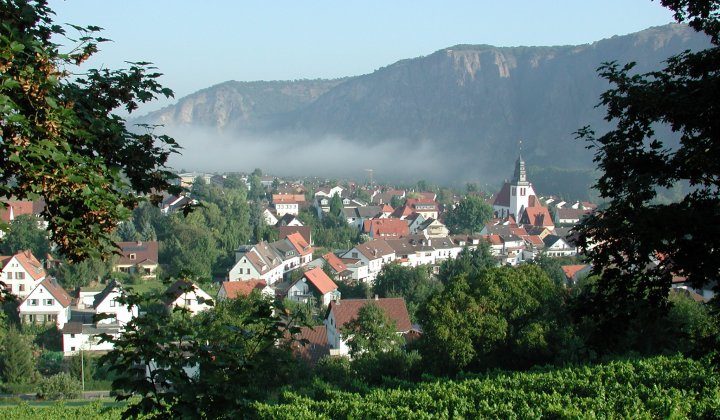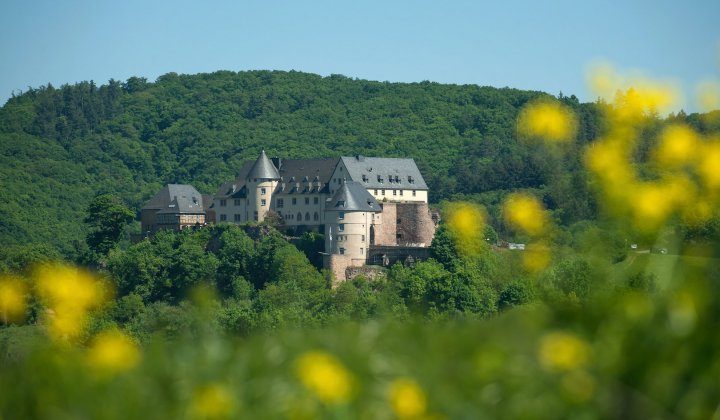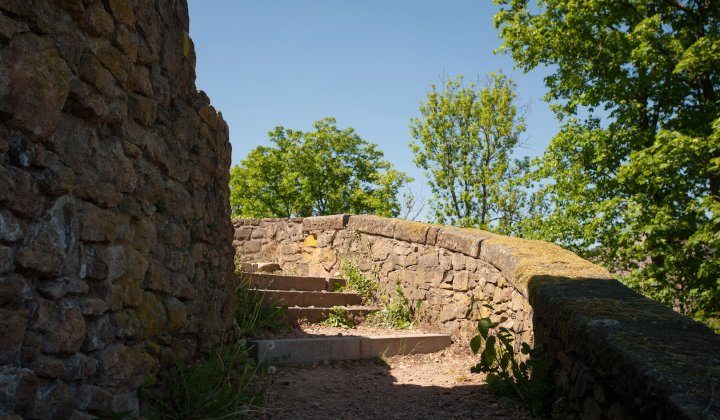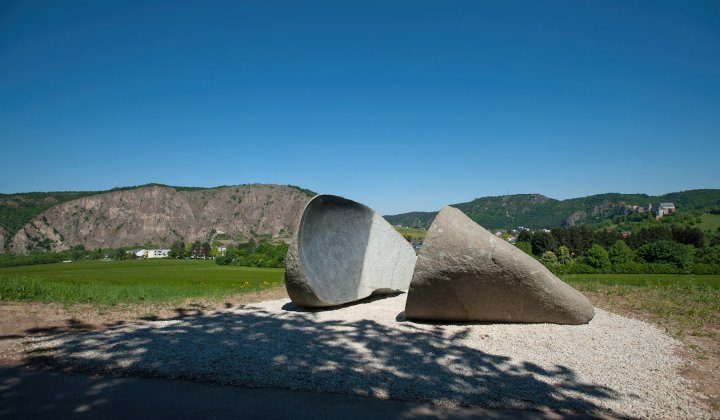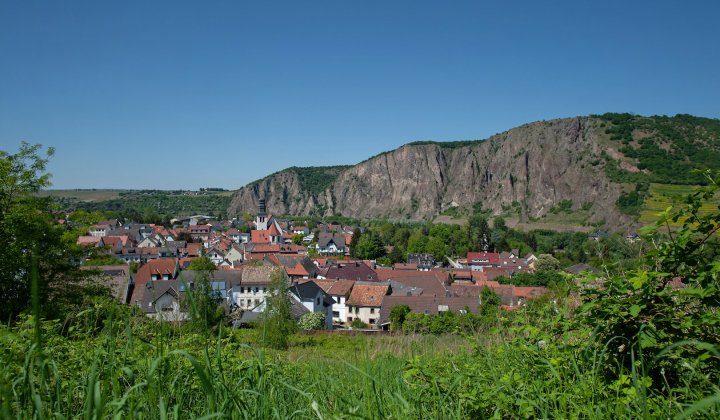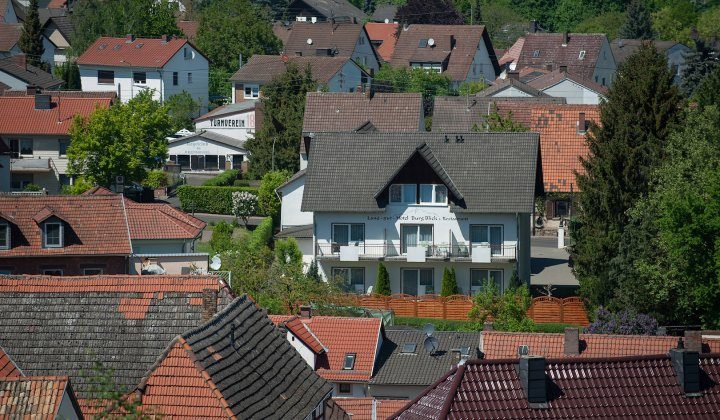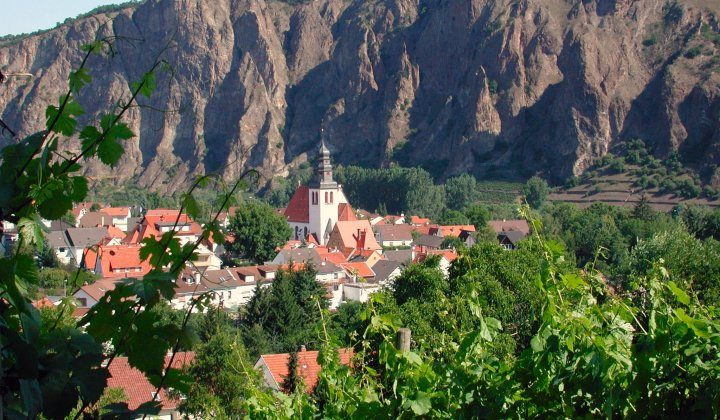Legend has it that the devil built the castle in a single night, and he demanded as his reward the soul of the first person to look out of one of the castle’s windows. He was convinced that this person would be the castle chaplain, but he had not counted on the guile and cunning of the count’s wife. She dressed up a donkey, took it to the window, and made it look outside. So, in the end the devil got the donkey and not the chaplain. Enraged, he stormed away, never to be seen again. The castle was mainly used as a lair for robber knights, but it met its end when it was blown up by the French in 1688.
The town of Münster am Stein, whose name was probably derived from the Latin word "Monasterium", consisted of no more than a handful of houses. Its inhabitants supported themselves from fishing, a little agriculture, and occasional copper mining in the Huttental valley. Towards the end of the fifteenth century, it started mining salt and also began functioning as a spa town. It is for this that the town became known well beyond its borders, and so it remains to this day. The construction of the Rhein-Nahe railway in 1859 followed by the Alsenzbahn rail line in 1871 ushered in the spa town’s great rise. As an international railway hub, it attracted distinguished guests from all over the world. By now it was enjoying its golden age. Bad Münster am Stein has been a recognised spa town since 1905. Its first major setback came with the First World War, while in the Second World War it suffered around 20 bomb attacks, aimed at the strategically important railway line, destroying large parts of the town.
History of Ebernburg
Here too, the story begins with a castle and a legend, namely that of the Ebernburg castle, which later gave its name to the neighbourhood below it. It is said to have been built by the Salians in the eleventh century, although there is no clear evidence of this. It is not hard to understand why a castle would be built at this particular place. It was the location of important military and trade routes, and whoever controlled it was at a great advantage. According to legend, the castle (or ‘Burg’ in German) really did get its name from a boar (or ‘Eber’ in German). Indeed, it was a boar that played the starring role in a siege, in which outside forces attempted to starve the inhabitants of the castle into submission and then take the castle. The story goes that just as they were about to run out of food, the lord of the castle had an ingenious idea. Every day for fourteen days, a boar was dragged onto the castle courtyard and thrown on its back, as if about to be slaughtered. The boar screamed in panic as loud as it could, giving the besiegers the impression that the inhabitants were able to slaughter a boar every single day. In the belief that they had meat in abundance, the besiegers finally withdrew, and the castle was spared. The castle was thereafter named Ebernburg, in honour of the boar.
The castle became well-known towards the end of the fifteenth century under Franz von Sickingen as the "hostel of justice". He granted several important reformers refuge from religious persecution during the time of Luther; these included Ulrich von Hutten, Martin Bucer and Johannes Oekolampad, who held the first church service in the German language in Ebernburg in 1522. Over the centuries, it suffered severe damage, most recently in 1945. Today, it functions as a family holiday and education centre.
In the middle of the fourteenth century, construction began of what was envisaged as a town at the foot of the castle, to be known as the ‘old village’ or ‘Altdorf’. By now, the importance of the village of Ebernburg had grown considerably. This is the time when wine cultivation began, but the people also lived from agriculture and craft trades. From the nineteenth century onwards, it also began to grow as a tourist destination. Ebernburg remains an important wine centre to this day, and it is still the characteristic feature of the district. The former centre is partially preserved and visitors to the town would be well advised to take a stroll there and visit one of the many typical local vintner’s taverns.
Bad Münster am Stein-Ebernburg today
Following an administrative reform, the two parts of the town were merged in 1969, with town rights being granted in 1978. It has a population of approximately 4200. Bad Münster am Stein-Ebernburg is the seat of the district administration of the same name, which is itself composed of 10 local communities with approximately 11,000 inhabitants. The town is strongly oriented towards tourism; this and wine cultivation represent its two key economic sectors. We are also well known for the outstanding climate here. This is evidenced by the fact that we are not only a health spa but also a climatic spa town. Our local remedy is radon, which is unique throughout the world because of the way it is administered (by inhalation) and whose great success is also down to the precise dosing that this enables.

